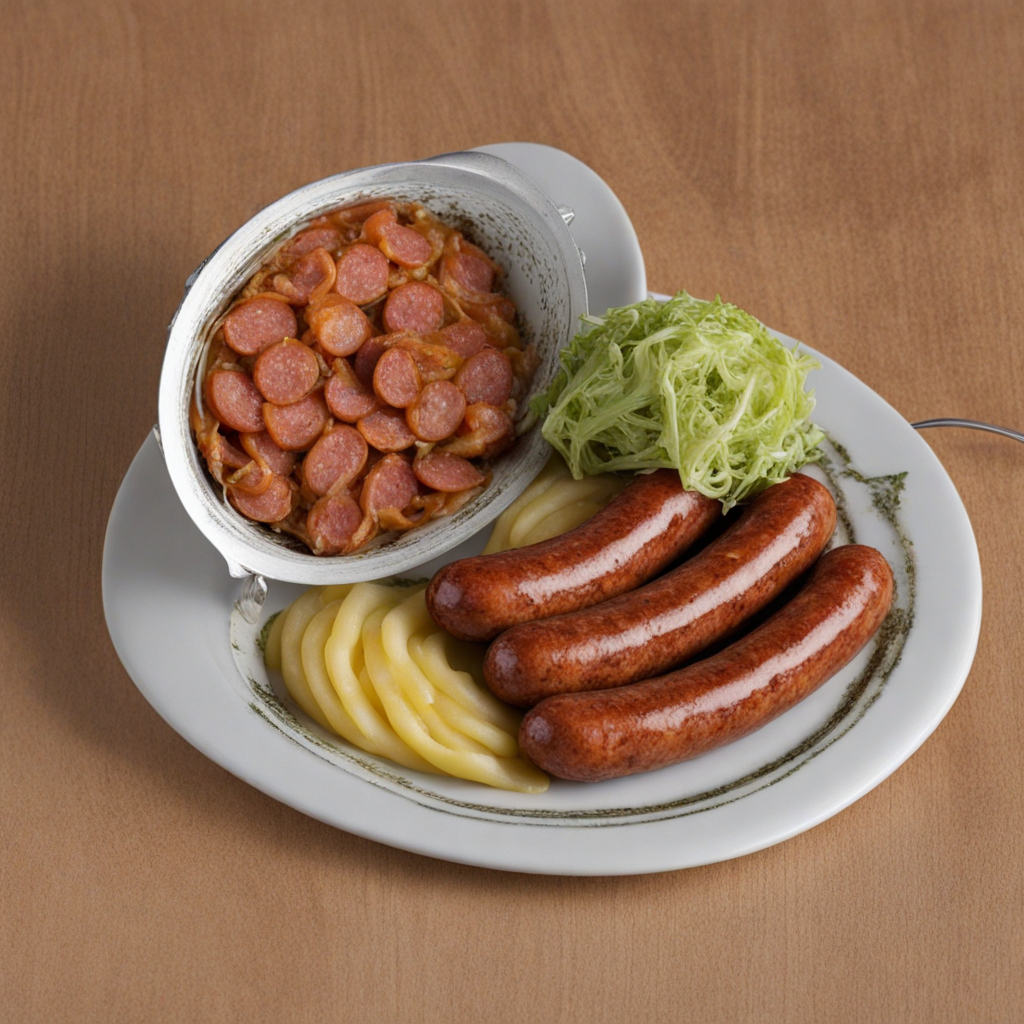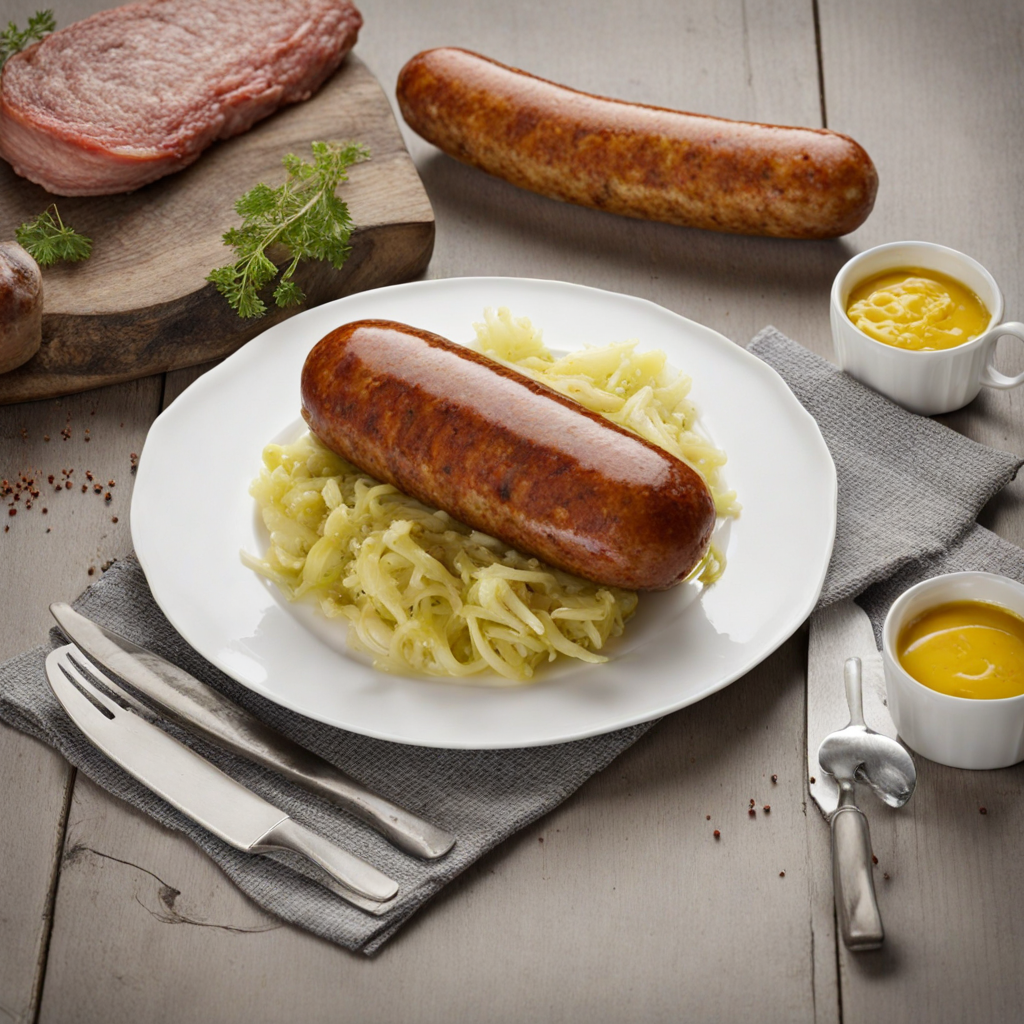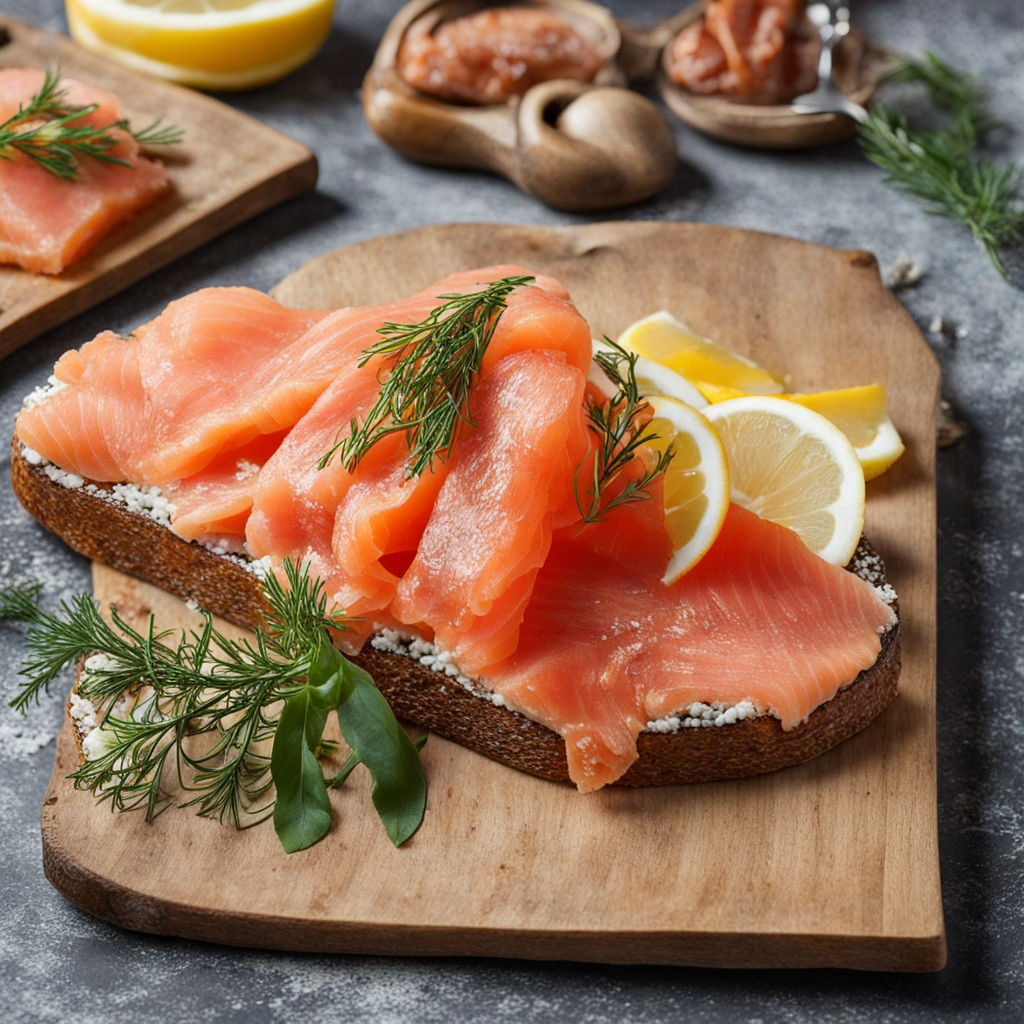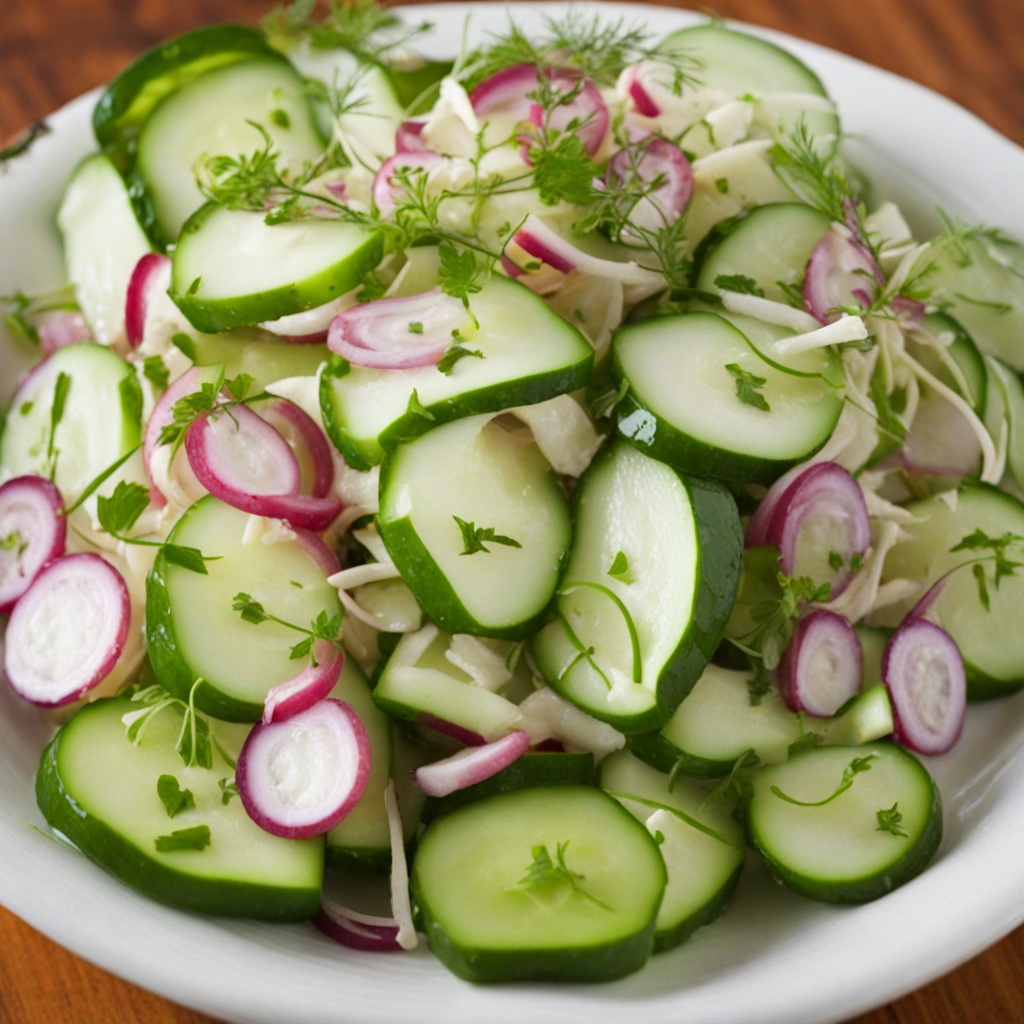Medisterpølse
Medisterpølse is a traditional Danish sausage that embodies the rich culinary heritage of Denmark. This savory delight is typically made from a blend of coarsely ground pork, seasoned with an array of spices such as nutmeg, allspice, and white pepper, giving it a uniquely warm and aromatic flavor profile. The sausages are often encased in natural hog casings, which not only helps retain the juiciness of the meat but also provides a satisfying snap when bitten into. Medisterpølse is usually enjoyed fresh, and its preparation often involves grilling or pan-frying until golden brown, allowing the flavors to deepen and the exterior to develop a deliciously crispy texture. One of the most appealing aspects of Medisterpølse is its versatility. It can be served in various ways; commonly, it is accompanied by creamy potato dishes, tangy pickled red cabbage, and rich brown gravy, which create a comforting and hearty meal. During festive occasions, it often takes center stage at family gatherings and Christmas dinners, reflecting its status as a beloved comfort food in Danish households. The combination of spices and the savory richness of the pork provides a taste experience that is both hearty and satisfying, making it a favorite among locals and visitors alike. For those looking to explore new flavors, Medisterpølse offers a delightful introduction to Danish cuisine. Its unique seasoning and preparation methods showcase the simplicity and richness of traditional Danish food culture. Whether enjoyed as part of a larger feast or as a standalone dish, Medisterpølse promises a warm and hearty eating experience that captures the essence of Denmark’s culinary traditions.
How It Became This Dish
Medisterpølse: A Traditional Danish Delight Medisterpølse, a distinctive Danish sausage, embodies centuries of culinary tradition and cultural significance that reflects the rich agricultural history of Denmark. This savory sausage, characterized by its coarse texture and robust flavor, is not only a staple of Danish cuisine but also a symbol of the country’s heritage, craftsmanship, and communal dining practices. #### Origins and Historical Context The origins of Medisterpølse can be traced back to the medieval period in Denmark, a time when food preservation techniques were essential for survival during harsh winters. Sausages, in general, have a long history in Europe, with variations found in almost every culture. In Denmark, the art of sausage-making was influenced by both local resources and the culinary traditions of neighboring countries. The name "Medisterpølse" itself has roots in the Danish word "medister," derived from the Latin "mānsuētīnus," which refers to a type of sausage. The earliest mentions of Medisterpølse appear in historical records from the 15th century, but it likely predates this documentation, as the practice of making sausages was common among rural communities. These early versions were typically made from pork, often using the less desirable cuts, mixed with spices and herbs that were readily available. #### Ingredients and Preparation The traditional Medisterpølse is primarily made from minced pork, although variations may include beef or a mixture of meats. The key to its unique flavor lies in the blend of spices used, which often includes salt, pepper, nutmeg, and allspice. The sausage mixture is typically encased in natural hog casings, giving it a characteristic plumpness. One of the defining features of Medisterpølse is its coarsely ground texture. Unlike finer sausages, which may have a smooth consistency, Medisterpølse’s texture allows for a delightful bite, enhancing the overall eating experience. The sausages are usually formed into long links and can be prepared in various ways, including frying, grilling, or baking. #### Cultural Significance Medisterpølse holds a special place in Danish culture, often associated with festive occasions and family gatherings. It is traditionally served during Christmas, where it is a key component of the Danish Christmas dinner, known as "julefrokost." Alongside other traditional dishes like roast pork, duck, and various pickled herring, Medisterpølse adds a hearty, comforting element to the holiday table. The cultural significance of Medisterpølse extends beyond its role in festive meals. It embodies the values of Danish hospitality and the importance of sharing food with loved ones. The preparation of Medisterpølse can also bring families together, as making sausages is often a communal activity, passed down through generations. This practice fosters a sense of heritage and continuity, strengthening family bonds as recipes and techniques are shared. #### Development Over Time As Denmark evolved through the centuries, so too did Medisterpølse. The industrial revolution in the 19th century brought about significant changes in food production and consumption. The rise of butcher shops and the increased availability of pork products led to greater access to Medisterpølse for the general population. The sausage became a staple not only in rural households but also in urban settings, where it was embraced as a convenient and flavorful food option. In the 20th century, as globalization and modern culinary trends began to influence Danish cuisine, Medisterpølse adapted to new tastes and preferences. While traditional recipes remain popular, contemporary interpretations have also emerged, incorporating innovative spices and serving methods. Chefs and home cooks alike have experimented with Medisterpølse, offering gourmet versions that often feature local and organic ingredients. Despite these modern adaptations, the essence of Medisterpølse has remained intact. Traditional preparation methods and recipes are still cherished, and many Danish families continue to make their own sausages at home, preserving the time-honored techniques passed down through generations. #### Medisterpølse in the Modern Culinary Scene Today, Medisterpølse can be found in various forms throughout Denmark, from bustling markets to fine dining establishments. It is often featured on menus that celebrate traditional Danish cuisine, showcasing its versatility. Chefs may serve it with side dishes like red cabbage, caramelized potatoes, or a rich gravy, highlighting the sausage’s adaptability within the broader context of Danish culinary traditions. In addition to its presence in restaurants, Medisterpølse has found a place in the hearts of food enthusiasts and home cooks worldwide. As global interest in traditional and artisanal foods grows, the unique qualities of Medisterpølse have garnered attention beyond Denmark’s borders. Cooking classes and food festivals often include Medisterpølse as a highlight, allowing people to engage with this iconic dish and learn about its history and significance. #### Conclusion Medisterpølse is more than just a sausage; it is a testament to Denmark's rich culinary heritage and cultural identity. From its humble origins in medieval kitchens to its place on modern tables, this traditional sausage encapsulates the spirit of Danish hospitality, communal dining, and the celebration of local produce. As Denmark continues to embrace its culinary roots while exploring new flavors and techniques, Medisterpølse stands as a cherished reminder of the past—an enduring symbol of tradition, family, and the simple joys of sharing a meal together. Whether enjoyed during festive gatherings or as a comforting everyday dish, Medisterpølse will undoubtedly remain an integral part of Denmark’s gastronomic landscape for generations to come.
You may like
Discover local flavors from Denmark







